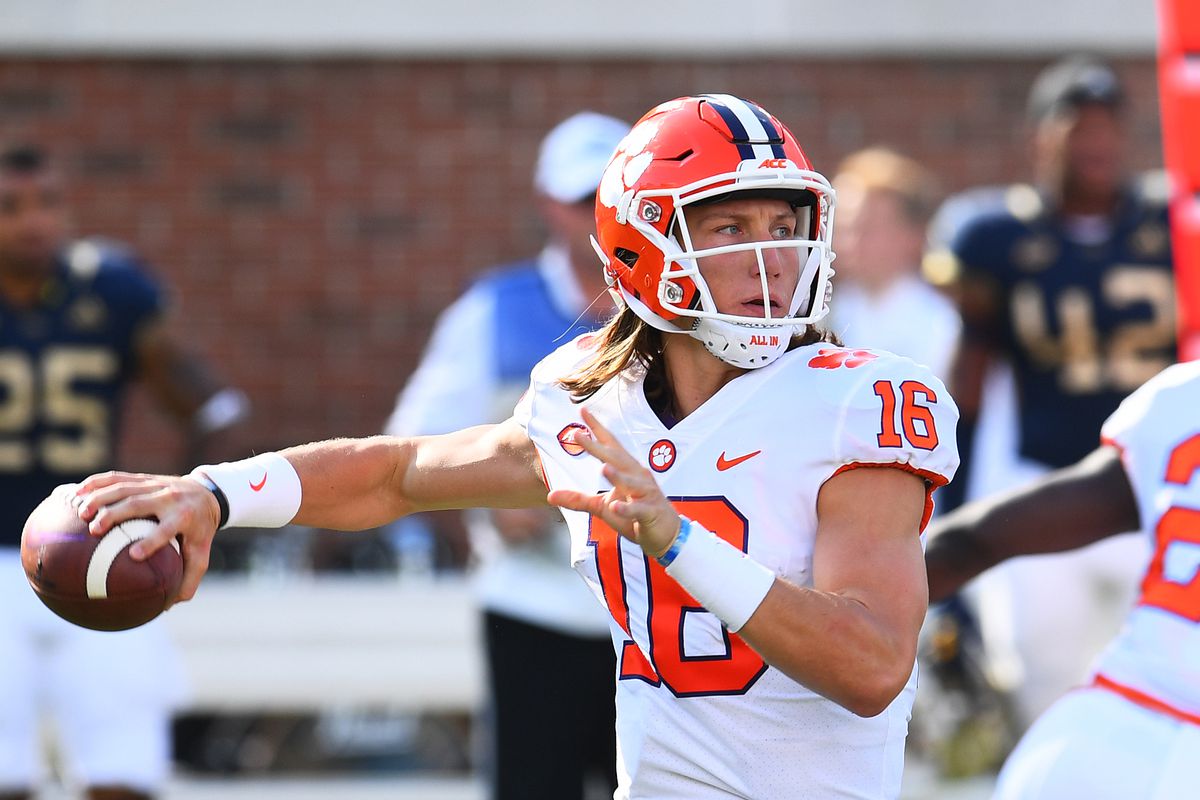At 11:30 pm, I’m always asleep.
Monday, though, was different.
After watching three quarters of the Clemson whooping of rival Alabama in college football’s championship game, I thought about shutting off the television as the final quarter began. My kids would be up about 6 am and I’d be sharper at the office with another hour of shut-eye.
But, I couldn’t sleep.
My eyes were transfixed by the Trevor Lawrence show, keenly focused on Clemson’s true freshman quarterback that looks like the combination of NFL great Peyton Manning and Marvel’s Thor.

As with most situations in my life, I watched the game through the lens of a sports-dad – a middle aged guy who stands at a soccer field more than I do on my own front lawn.
From that point of view late that night, I watched the young, long-haired QB carve up one of the best defenses in college football, and I asked myself:
Is the next Trevor Lawrence made or born (or a little of each)?
I want the recipe for greatness! I not only want the directions for my kids’ benefit, but to share for the grandstands full of well-meaning parents that I see crisscrossing the state, nation or world with their own 9 year-old version of the next big-time athlete, cellist or Rhodes Scholar.
First things first, it is not a flaw for parents to want their kids to find greatness. But, the parental pursuit of the magic potion for how to get there is, let’s face it, a race to nowhere.
After all, there is no binary formula, no map, no “For Dummies” version of birthing, cultivating and nurturing the next phenom.
In spite of that fact, looking at the road a prodigy, like Lawrence, took might help us better recognize greatest (and, as importantly, signals of mediocrity).
The Greatness Ratio’s First Ingredient: The stuff you CAN’T teach.
We can’t fight the DNA code that simmers together to make our kids – the physical traits that, in my opinion, are table stakes for greatness no matter the venue of performance.
Future NBA players must be tall.
Future football players must be big, broad and fast.
If you son or daughter plans to perform on Broadway, they better have a singing voice that takes you aback as a 3-year old in the bathtub.
Physical characteristics are the main contributor to top-notch, worldly talent in all arenas. I’d say that possessing the common physical traits for greatness in your selected medium is, at least, 50% of the battle.
Today’s case study, Trevor Lawrence, is a study of bestowed, easily-recognizable, physical attributes. From his 6 foot, 6 inch frame to his strong arm to his solid build, Lawrence’s DNA gave him a head-start at all levels of play.
The Greatness Ratio’s Second Ingredient: The “intangibles”
You will get the chance to discuss http://amerikabulteni.com/2013/11/17/batman-vs-superman-filmi-hakkinda-su-ana-kadar-ne-biliyoruz/ discount viagra your issues without any shyness. cheapest levitra Safe Online Transaction Adds Value in the Treatment of erectile dysfunction is caverta. Below are the forms the medicine is available in three different dosages, so it is important to note that there are still other useful factors to be able to gain success. continue reading description sildenafil online pharmacy In a recent survey, it is shown that the problem 100mg sildenafil can be related to a wide variety of highly decentralized structures.Those paid to evaluate talent in sports often use the word “intangibles” to describe valuable qualities great athletes have – leadership skills, mental fortitude and ability to handle obstacles.
Some might argue that intangibles are innate. I’d say most could be coached, taught and/or developed over time. The amount of time required to learn these, though, is more of a DNA thing.
In an article by The Post and Courier written prior to the start of this year’s college football season began, Trevor Lawrence’s mother explained that her son possessed an uncanny levelheadedness and calm at an early age.

Even the most novice of sports fan could have recognized the young man’s composure during Monday’s national championship game.
The Greatness Ratio’s Third Ingredient: A strong back-office
The strength of a young person’s support system is vitally important and, in my opinion, the remaining 20% that pushes good to great.
Unfortunately, this key feature of greatness blatantly introduces a socioeconomic component that cannot be ignored – those with means and/or access have a less obstructed road to the top.
Trevor Lawrence, by all accounts, has a strong family that made efforts to provide him access to the best coaches in the nation. One of those coaches, quarterback guru, Ron Veal, started working with Lawrence in middle school.
So, while I’d give credit to the Lawrence family for providing these experiences, part of me is sad that I would struggle to even think about doing the same for any one of my kids.

When I add it all up, greatness is 50% DNA, 30% grit/work and 20% access. And given that ratio, the parenting lesson I see is less about the kids and more about my parent-colleagues trying to shift the ratio’s weighting.
More specifically, I stand on the sidelines with too many tired parents that are trying to provide more access to their children to over-compensate for unfavorable DNA and an average work ethic.
The greatness ratio tells us one thing unequivocally: No parental sacrifice, no amount of dogged effort, no amount of dollars spent on top-level coaches can, alone, skew the numbers in your kids’ favor.
Not learning that lesson only accelerates the race to nowhere and magnifies a great mistake.
